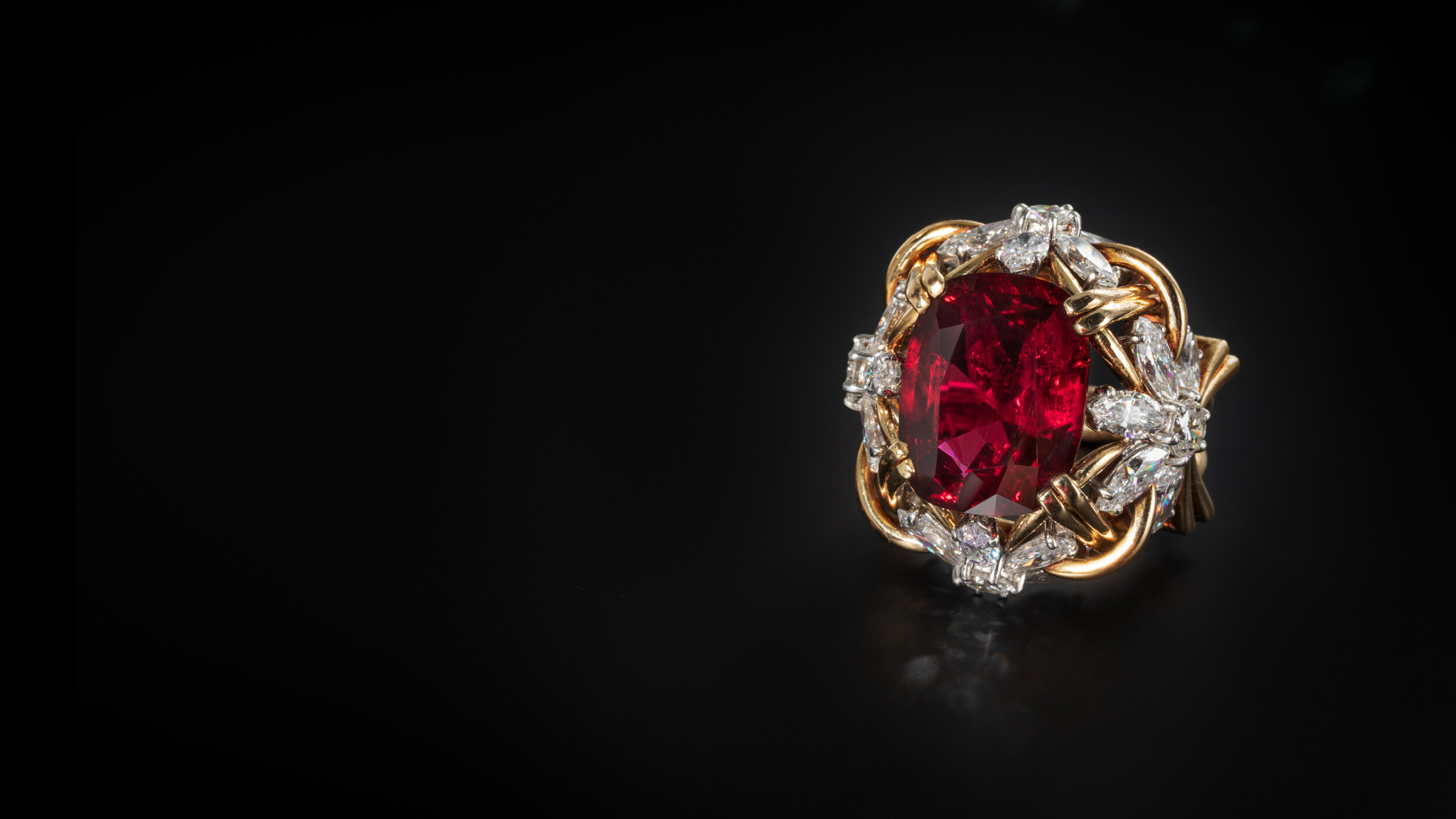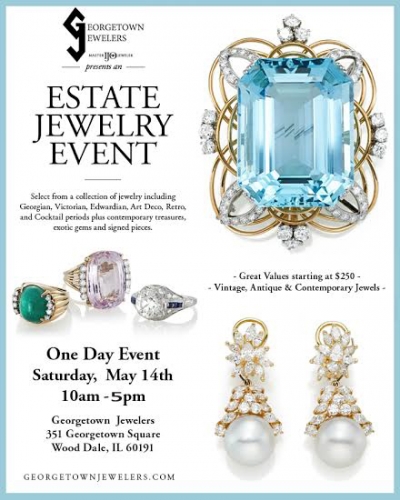Estate Jewelry Near Me: Where to Find Stunning Pieces Close to You
Estate Jewelry Near Me: Where to Find Stunning Pieces Close to You
Blog Article
Reveal the Rich Background Behind Stunning Estate Jewelry Collections
The expedition of estate fashion jewelry collections uses a distinct window right into background, exposing the elaborate relationship between workmanship and social development. What secrets might these collections still hold?
The Beginnings of Estate Precious Jewelry
Exactly how did estate fashion jewelry pertained to embody the abundant background and creativity of bygone periods? The beginnings of estate jewelry can be mapped back to different periods of craftsmanship, where jewelry was not just a device yet a representation of societal worths, technological innovations, and creative expressions. Each item informs a story, often connected with the lives of their previous proprietors, enveloping personal stories alongside historic contexts.
The term "estate precious jewelry" commonly describes secondhand items, frequently from significant eras such as Victorian, Art Nouveau, or Art Deco. These items were developed with thorough focus to information, showcasing the ability of artisans that utilized materials like gold, silver, and priceless gemstones. Unlike contemporary jewelry, estate pieces often feature distinct layouts that highlight the aesthetics of their time, hence acting as tangible links to the past.

Notable Layout Ages
Throughout background, a number of notable style periods have substantially affected the advancement of estate precious jewelry, each defined by distinctive styles, materials, and cultural contexts. The Georgian period (1714-1837) noted the start of complex designs, typically featuring nature-inspired concepts and making use of products like gold, silver, and gems set in elaborate setups. Following this, the Victorian age (1837-1901) introduced charming motifs, with nostalgic fashion jewelry and cutting-edge techniques such as using enamel and cameos.
The Art Nouveau duration (1890-1910) commemorated organic kinds and the elegance of nature, utilizing materials like opals and pearls in flowing styles. This was done well by the Art Deco period (1920-1939), which welcomed geometric patterns, vibrant colors, and elegant materials such as platinum and diamonds, reflecting the modernist spirit of the moment.
The Mid-Century Modern period (1940-1960) showcased streamlined layouts and making use of unusual materials, highlighting minimalism and functionality. Each of these ages not only shows the creative activities of their time yet additionally encapsulates the social values and technological innovations that shaped jewelry style, making them an interesting subject for collectors and historians alike.

Famous Estate Fashion Jewelry Collections
The abundant history of estate precious jewelry is wonderfully exhibited by several distinguished collections that display the artistry and craftsmanship from various style periods. One of the most renowned is the Cartier Collection, which reflects the high-end and advancement of the iconic French jeweler. Pieces from this collection usually feature splendid gems and detailed designs, highlighting the brand's commitment to fine workmanship.
An additional remarkable collection is the Duchess of Windsor's jewelry collection, which makes up a number of unique items, consisting of the legendary "Windsor" arm band. This collection not just exhibits the elegance of the Art Deco period but also carries a rich narrative of love and loss, as it belonged to Wallis Simpson, who famously married Edward VIII.
The collection of the late actress Elizabeth Taylor also stands apart in the realm of estate jewelry. With various pieces designed by popular jewelers like Bulgari and Cartier, her collection embodies glamour and sophistication, underscoring her individual design and fondness for special gemstones.
These well-known estate jewelry collections function as a testament to the long-lasting attraction of fine fashion jewelry, providing insight right into the creative and cultural activities that formed their development.
The Cultural Significance
Estate precious jewelry collections hold extensive cultural significance, mirroring not just the aesthetic values of their corresponding ages however also the historic and social contexts in which they were created. Each item commonly symbolizes the craftsmanship and imaginative patterns of its time, showcasing the evolution of layout explanation and innovation in jewelry production.
Additionally, these collections act as substantial links to social customs and rituals. Wedding event bands and antique brooches might represent love and domestic bonds, while pieces embellished with particular gems can represent local or social identities. The materials made use of-- whether gold, silver, or jewels-- frequently inform stories of profession, exploration, and the wide range accumulation of cultures.
Additionally, estate fashion jewelry can operate as historical artifacts, giving insights into the lives of people and the social norms they navigated. The means jewelry was used and valued can disclose much concerning gender functions, standing, and individual expression within varying cultural landscapes. Therefore, estate precious jewelry transcends mere decoration, working as an abundant narrative of human experience, artistry, and cultural heritage, welcoming modern target markets to involve with the past in a meaningful way.
Taking Care Of Your Estate Parts
Looking after estate precious jewelry items calls for a thoughtful approach to guarantee their longevity and maintain their one-of-a-kind characteristics. To maintain the beauty of these treasures, it is necessary to handle them with care. Always clean estate jewelry making use of a soft, lint-free towel after each wear to get rid of oils and dust. For much deeper cleansing, utilize a moderate soap service and a soft brush, taking care to avoid harsh chemicals that might harm fragile materials.
Storage is equally important; shop pieces separately in a fabric-lined box to avoid damaging and entangling. Think about using anti-tarnish bags or fabrics for silver items, as this aids to reduce down the tainting process. Additionally, stay clear of exposing jewelry to excessive wetness, extreme temperature levels, or direct sunshine, which can adversely impact gemstones and metals.
Regular evaluations are important. Examine for loose stones, used clasps, or harmed setups, and look for expert repairs when required. Consulting a jeweler experienced in vintage or antique items can offer customized care alternatives. By executing these techniques, collection agencies can maintain their estate fashion jewelry's historic and aesthetic value, making certain these pieces remain to be cherished for generations to pop over to this site find.
Conclusion
To conclude, the expedition of estate precious jewelry collections reveals a tapestry of creative expression and social value, reflecting the values and appearances of various historical periods. Each item functions as a testimony to remarkable craftsmanship and the stories of those that as soon as possessed them. Recognizing the beginnings, layout periods, and notable collections enhances appreciation for these artifacts, emphasizing their role in preserving cultural heritage and encouraging continued stewardship and take care of these remarkable treasures.
The exploration of estate jewelry collections offers an unique window right into background, disclosing the detailed partnership in between craftsmanship and cultural evolution. The origins of estate precious jewelry can be mapped back to different periods of craftsmanship, where jewelry was not merely a device yet a representation of social worths, technological developments, and artistic expressions.The This Site term "estate jewelry" commonly refers to secondhand items, typically from considerable eras such as Victorian, Art Nouveau, or Art Deco.The abundant history of estate jewelry is magnificently exhibited by a number of popular collections that showcase the virtuosity and workmanship from various layout periods.In final thought, the exploration of estate precious jewelry collections exposes a tapestry of imaginative expression and social importance, mirroring the values and visual appeals of various historic periods.
Report this page